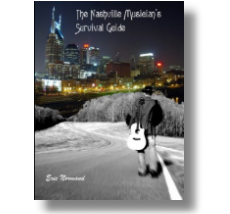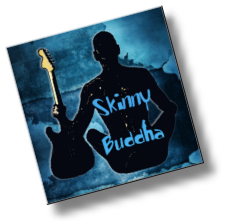
I’ve wanted to take a step with my vocal abilities for some time now and this year seemed like a good time to do it. A few months ago I dug out an old vocal method book, “The Rock ‘n Roll Singer’s Survival Guide” by Mark Baxter, a vocal coach I had studied with in Boston in the late 90s. After digging into it for a few weeks I came across one of the books many great recommendations – the importance of taking voice lessons from a vocal coach – and that was all I needed for encouragement.
I had recently heard some great things about Nashville-based vocal coach, Judy Rodman, so I decided to give her a try. In early March I took my first lesson at her home studio, a one hour session during which we covered a lot of ground. After discussing my current musical activities and goals, she began the lesson by demonstrating some “mechanics” about the human voice, partially aided by the use of models and diagrams. Then she took me through some warm-ups, all the while listening and observing my “habits.” Next, she had me sing a song of my choosing, and this is when it became even more apparent that she had a truly unique approach to vocal training.
After strapping on my guitar, she had me sing into a mic that was plugged into a couple of floor monitors to emulate a live gig. I don’t think I sang more than a verse before she told me to stop so she could address some issues. Apparently, years of guitar playing, combined with other “intellectual pursuits” had allowed me to develop some bad posture, posture that was restricting my vocal abilities. To begin correcting this, she had me sing while standing with my head and one heal up against the wall, while allowing my shoulders and back to be loose.
She also introduced some other concepts to improve my vocal “path.” One I found particularly enlightening was to pick an object or spot on the wall and imagine that it’s a person to whom I am telling a story. Another was to pretend I’m singing to a deaf person, to cause a deeper articulation of the words and phrases. Yet still another was to raise my eyebrows when I sing, as this expands “the cave” and will allow for a more resonant sound. By the time I left the lesson I was not only inspired to go home and practice, I had made an immediate and noticeable improvement.
Since that day I’ve taken a half-hour lesson every other week and have made great strides, and I actually look forward to practicing! Like any great music teacher or coach, Judy has a gift for custom tailoring each student’s approach and practice regimen; she quickly honed in on my problems and came up with the appropriate exercises and concepts to correct them, each lesson introducing new ones. If you live in middle Tennessee (or anywhere for that matter, as Judy also gives lessons over the phone or via Skype), and are in need of some vocal coaching, I highly recommend Judy, she is truly a vocal coach extraordinaire!
Well that’s it for today; it’s time to go sing!
Have you ever found yourself in a situation which required you to play a song you did not know? Perhaps you’ve had to play unfamiliar material while sitting in at a blues jam or open mic. Or maybe when an audience member shouts out a request and your band attempts it even though none of you have ever played it before. I have been in these situations countless times. I’ve even been in situations where an artist decides to attempt an unfamiliar tune with the band hanging on for dear life, in front of thousands of people.
In these unnerving situations I have learned to embrace some great advice from my mentor “D” – “When in doubt, lay out.” That’s right; if you don’t know what chord or note is coming next, don’t play anything. Sometimes it’s better to leave some gaping holes in the music than it is to take a chance on playing “the ugly chord.”
One thing I have learned is that a song won’t completely fall apart if you simply miss the downbeat of a few chord changes. Songs have momentum, and a lot of this momentum is carried by the vocalist and the overall groove. As long as there is a lyric and melody happening over some kind of basic “chug factor” the audience won’t miss a few guitar chords or bass notes here and there. Of course if it’s the bass player that doesn’t know the tune, it’s a lot easier for the song to fall apart, as incorrect root motion might derail some of the other players.
One of my favorite tricks for getting through an unfamiliar tune is to avoid playing thirds. In many cases, the melody will dictate whether or not the song is in a major or minor mode. But in some situations the melody might be too ambiguous for this to be obvious. So if you only play chords containing roots and fifths, nothing will sound wrong.
Another concept I have engaged in is to play very lightly through the first verse and chorus, while intensely listening to the lead melody sang by the vocalist. By playing lightly it becomes easier to hear the vocals, giving me some time to figure out what’s going on. Melody dictates harmony, so there’s a lot of information in that first verse and chorus. After I make it through the first verse and chorus and know a little more about the songs melody and chord changes, I might dig in a little harder the next time around.
But by the time the song reaches that all-so-elusive bridge, this is where many players can get into trouble on unfamiliar tunes. In the words of Dirty Harry – ask yourself one question – “Do you feel lucky?” Do you feel brave enough to take a chance, and guess what chord is coming next? Maybe you’ll get it right and look like a big hero. But if you guess wrong and play a big old ugly chord, you might find yourself as the conductor of a good old-fashioned train wreck and derail the whole song.
“When in doubt, lay out”
As some of you may know, and for those of you who don’t know, I have just released my book “The Nashville Musician’s Survival Guide.” This street-level perspective of the music-related jobs in the Nashville music industry is now available in print version, and the e-book will be available within a few days. To purchase your own copy, follow this link.

